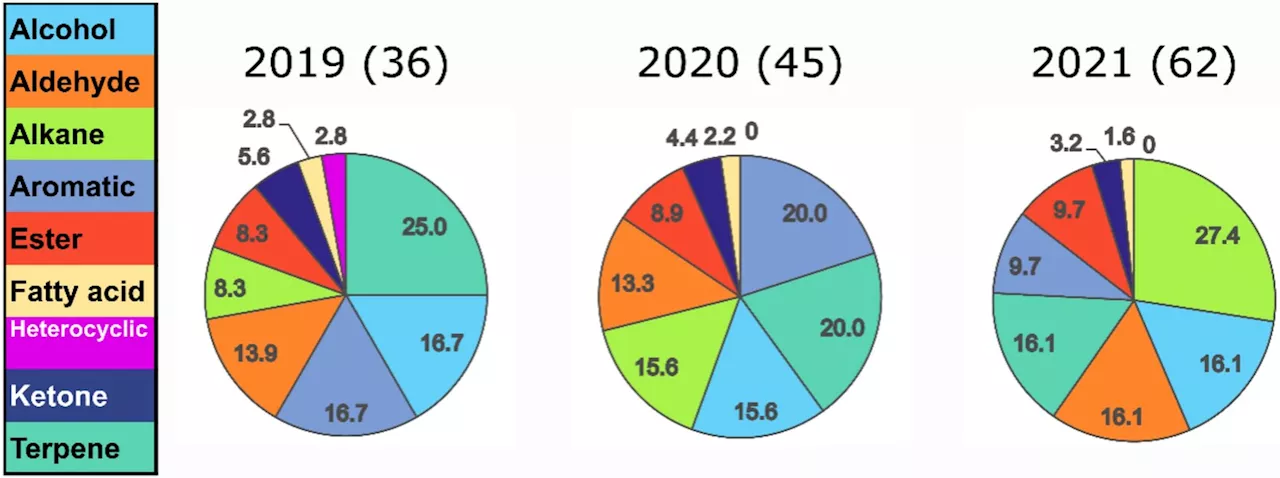Researchers have cracked the code of plant-to-fungi communication in a new study. Using baker's yeast, the researchers discovered that the plant hormone strigolactone (SL) activates fungal genes and proteins associated with phosphate metabolism, a system that is key to growth.
Researchers have cracked the code of plant-to-fungi communication in a new study. Using baker's yeast, the researchers discovered that the plant hormone strigolactone activates fungal genes and proteins associated with phosphate metabolism, a system that is key to growth. This insight into how fungi respond to chemical signals at the molecular level could lead to new strategies for cultivating hardier crops and combating disease-causing fungi.
"As we begin to understand how plants and fungi communicate, we will better understand the complexities of the soil ecosystem, leading to healthier crops and improving our approach to biodiversity," says Shelley Lumba, lead author and assistant professor in the department of cell and systems biology at the University of Toronto.
In other cases, disease-causing fungi can exploit chemical cues to infect crops, sometimes wiping out entire harvests. Understanding this chemical language could also help block such pathogens. The researchers determined that plants release SLs when starved for phosphate, signalling the yeast to change its phosphate uptake.
"The potential impact of this research can improve the lives of so many," says Lumba."It's about healthy soil for a healthy planet."James M. Bradley, Michael Bunsick, George Ly, Bruno Aquino, Flora Zhiqi Wang, Duncan Holbrook-Smith, Shingo Suginoo, Dylan Bradizza, Naoki Kato, Omar As’sadiq, Nina Marsh, Hiroyuki Osada, François-Didier Boyer, Christopher S.P. McErlean, Yuichiro Tsuchiya, Rajagopal Subramaniam, Dario Bonetta, Peter McCourt, Shelley Lumba.
Organic Endangered Plants Microbiology Geochemistry Ecology Grassland Environmental Issues
United States Latest News, United States Headlines
Similar News:You can also read news stories similar to this one that we have collected from other news sources.
 Soil volatile organic compound profiles show promise for evaluating soil health in soybean fieldsMaintaining soil health is crucial for sustainable agriculture. Recently, soil volatile organic compounds (VOCs) have emerged as promising indicators for assessing soil health. A new study aimed to evaluate the effectiveness of soil VOC profiles as indicators of soil health in soybean fields.
Soil volatile organic compound profiles show promise for evaluating soil health in soybean fieldsMaintaining soil health is crucial for sustainable agriculture. Recently, soil volatile organic compounds (VOCs) have emerged as promising indicators for assessing soil health. A new study aimed to evaluate the effectiveness of soil VOC profiles as indicators of soil health in soybean fields.
Read more »
 Researchers Witness Water Generation at Nanoscale Using PalladiumScientists at Northwestern University have observed, for the first time, hydrogen and oxygen atoms merging to form water molecules at the nanoscale using an electron microscope. This breakthrough allows researchers to understand and optimize the process, potentially leading to on-demand water generation in arid environments.
Researchers Witness Water Generation at Nanoscale Using PalladiumScientists at Northwestern University have observed, for the first time, hydrogen and oxygen atoms merging to form water molecules at the nanoscale using an electron microscope. This breakthrough allows researchers to understand and optimize the process, potentially leading to on-demand water generation in arid environments.
Read more »
 UMass researchers are using drones to learn about traffic risks for cyclists in SomervilleThe project, overseen by a UMass Amherst professor, will assess how well bike safety infrastructure is working and assess the likelihood of bicycle crashes with cars.
UMass researchers are using drones to learn about traffic risks for cyclists in SomervilleThe project, overseen by a UMass Amherst professor, will assess how well bike safety infrastructure is working and assess the likelihood of bicycle crashes with cars.
Read more »
 Chinese Researchers Reverse Type 1 Diabetes in Woman Using Stem Cell TherapyFor the first time, a 25-year-old woman with type 1 diabetes has seen her condition reversed using stem cell therapy in China. The groundbreaking treatment involved extracting pancreatic cells from the woman, reprogramming them, and re-injecting them into her abdomen. After three months, she began producing insulin naturally, and after a year, her blood sugar remains within a healthy range.
Chinese Researchers Reverse Type 1 Diabetes in Woman Using Stem Cell TherapyFor the first time, a 25-year-old woman with type 1 diabetes has seen her condition reversed using stem cell therapy in China. The groundbreaking treatment involved extracting pancreatic cells from the woman, reprogramming them, and re-injecting them into her abdomen. After three months, she began producing insulin naturally, and after a year, her blood sugar remains within a healthy range.
Read more »
 How researchers in San Antonio are using helmet padding to protect athletes, soldiersA team of researchers from the University of Texas San Antonio and the Southwest Research Institute (SwRI) have been working for the last year and a half to develop new helmet padding technology.
How researchers in San Antonio are using helmet padding to protect athletes, soldiersA team of researchers from the University of Texas San Antonio and the Southwest Research Institute (SwRI) have been working for the last year and a half to develop new helmet padding technology.
Read more »
 Researchers seek to improve advanced pain management using AI for drug discoveryAn estimated one in five Americans live with chronic pain and current treatment options leave much to be desired. Scientists are now using artificial intelligence (AI) for drug discovery in advanced pain management.
Researchers seek to improve advanced pain management using AI for drug discoveryAn estimated one in five Americans live with chronic pain and current treatment options leave much to be desired. Scientists are now using artificial intelligence (AI) for drug discovery in advanced pain management.
Read more »
